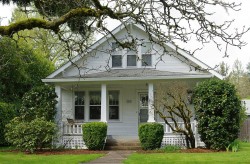 Housing has a direct effect on people’s quality of life and their access to opportunity. When households must spend a disproportionate share of their income on housing, they cannot afford other necessities such as food, transportation, and health care. The location of affordable housing also defines where low- and moderate-income households can afford to live, affecting their ability to access other essential resources and opportunities, such as quality education, parks and clean air.
Housing has a direct effect on people’s quality of life and their access to opportunity. When households must spend a disproportionate share of their income on housing, they cannot afford other necessities such as food, transportation, and health care. The location of affordable housing also defines where low- and moderate-income households can afford to live, affecting their ability to access other essential resources and opportunities, such as quality education, parks and clean air.
The Housing Map Series examines the distribution of affordable rental and owner-occupied housing across the region, and what this means from an equity perspective. The maps also explore how increases in housing prices in some parts of the region have contributed to patterns of displacement, as well as other shifts in the settlement patterns of low-income communities and populations of color. The  Map Series also includes an analysis of the minority home ownership gap, an exploration of the distribution of housing that is accessible for people with physical disabilities, and an analysis of potential disparities in home mortgage lending.
Map Series also includes an analysis of the minority home ownership gap, an exploration of the distribution of housing that is accessible for people with physical disabilities, and an analysis of potential disparities in home mortgage lending.
|
Map Series: |
Photo credits (top to bottom): By M.O. Stevens (Own work) GFDL (http://www.gnu.org/copyleft/fdl.html) or CC-BY-SA-3.0-2.5-2.0-1.0 (http://creativecommons.org/licenses/by-sa/3.0)], via Wikimedia Commons; REACH CDC; By M.O. Stevens (Own work) [CC-BY-SA-3.0 (http://creativecommons.org/licenses/by-sa/3.0)], via Wikimedia Commons

